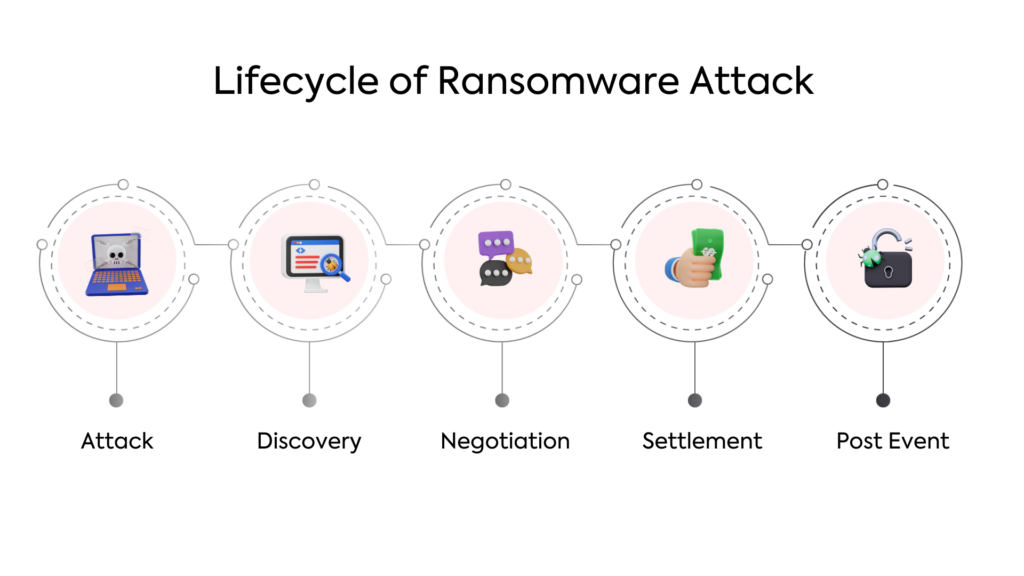- Home
- Services
- Solutions
- Compliance
- RBI Cyber Security Framework For Banks
- SEBI Cyber Security & Cyber Resilience Framework
- UIDAI – AUA KUA Compliance Security
- RBI Guidelines for Payment Aggregators & Payment Gateways
- RBI Cyber Security Framework For Urban Cooperative Banks
- RBI Guidelines for cyber security in the NBFC Sector
- SAR Audit
- ISO27001
- PCI DSS
- GDPR
- Hipaa Audit
- SOC2 Assessment
- Resources
- Company
- Contact
Ransomware Simulation
Simulate a real ransomware attack, expose weaknesses, and ensure your business can recover quickly. WeSecureApp's Ransomware Simulation puts your security to the test.










Why Ransomware Simulation?
Ransomware is a constant threat, and businesses need to be prepared. A ransomware simulation is like a fire drill for your IT infrastructure. It tests your defenses and exposes weaknesses before a real attack strikes. Here’s why you should consider a ransomware simulation
Identify Vulnerabilities
See how your systems react to a simulated attack, revealing security gaps like outdated software or unpatched vulnerabilities.
Sharpen Your Response
Practice your incident response plan in a controlled environment, helping your team work efficiently to contain and recover from an attack.
Improve Decision-Making
Simulations force tough choices in a pressured environment, mimicking a real attack and improving decision-making skills.
Increase preparedness
Running simulations builds confidence in your ability to handle a ransomware attack, reducing downtime and business disruption.

Don't Be Left Holding the Empty Drive - Run a Ransomware Simulation Now!
Features of Our Ransomware Simulation
Tailored Scenarios
We craft simulations that mimic real-world attacks, targeting your specific vulnerabilities and attack vectors.
Realistic Impact
Experience simulated data encryption, system lockouts, and ransom demands, just like a real attack.
Teamwork Training
Practice your incident response plan as a team, refining communication and collaboration under pressure.
Employee Awareness
Integrate simulations with employee training to identify and avoid phishing attempts, a major entry point for ransomware.
Detailed Reports
Receive comprehensive reports after each simulation, highlighting areas for improvement and tracking progress over time.
Cost-Effective Preparation
Investing in a simulation is significantly cheaper than recovering from a real ransomware attack.
Methodology
Planning Phase
- Define the purpose of the simulation, such as assessing security controls or evaluating response procedures
- Determine which systems or networks or environments will be tested and what types of scenarios will be simulated.
- Obtain necessary approvals and document the testing plan, including objectives, scope, and procedures.
Execution Phase
- Simulate the attack vectors that are used by abusing different weak misconfigurations using benign tools or scripts to mimic the behavior of real ransomware.
- Collaborate and Monitor the behavior of the simulated attack to see how security controls and teams respond.
- Assess the effectiveness of detection, containment, and recovery measures in mitigating the simulated attack.
Analysis Phase
- Analyze the results of the testing to identify weaknesses, vulnerabilities, or gaps in security defenses.
- Extract lessons learned from the testing to improve security posture and response capabilities.
- Develop recommendations for addressing identified issues and improving overall resilience to ransomware threats.
Reporting Phase
- Document the findings, recommendations, and improvements in a concise report
- Communicate the results of the testing to relevant stakeholders, including management, IT teams, and employees.
Ransomware Simulation Benefits
Expose Security Gaps
Test Your Defenses
Refine Response Plan
Boost Employee Awareness
Sharpen Decision-Making
Reduce Downtime
Minimize Data Loss
Improve Communication
Benchmark Progress
Prioritize Security Investments
Cost-Effective
Measure Effectiveness
Misconfigurations/Vulnerabilities We Tackle @WeSecureApp
- Process Injectors
- Privilege escalation checks and attacks that can lead to ransomware.
- PsExec Based Exploitation and control
- Self - Morphing Malware
- Abusing Environment Misconfigurations to leverage for payload delivery.
- Zip and archive attacks.

How WeSecureApp Can Help?
Conduct Ransomware Simulation on the target’s scope of environments
Identify weaknesses in the current threat detection and incident response capabilities
Demonstrate the overall ransomware readiness
Assist in addressing the risks that are associated with the assessment findings
Assist in developing remediation strategies
Do you know?
20%
of ransomware costs are attributed to reputation damage.
By 2031
ransomware attacks will happen every two seconds.
49 days
is the time it takes to identify and contain ransomware breaches compared to the average data breach.
$ 4.54 million
is the average cost of a ransomware attack.
Want a quick ransomware protection?
Frequently Asked Questions
A ransomware simulation is a controlled exercise that mimics a real-world ransomware attack on your IT infrastructure. It tests your security measures, exposes vulnerabilities, and helps train your team on how to respond effectively.
WeSecureApp can customize the simulation to mirror various attack vectors, including phishing emails, malware downloads, and network vulnerabilities.
No. We use a safe, isolated environment to simulate the attack, ensuring no disruption to your critical operations or data.
Regular simulations are key. We recommend running them at least annually or after major security changes.
Contact us today for a free consultation. We’ll tailor a simulation plan to meet your specific business needs.
By failing to prepare,
you are preparing to fail.
Simulate modern & sophisticated cyber attacks related to COVID and enable your team to defend your organization





